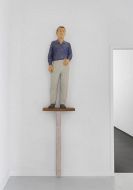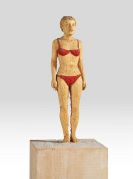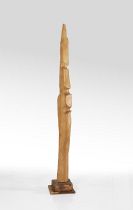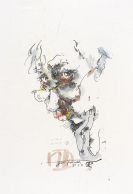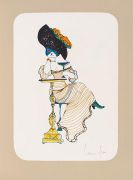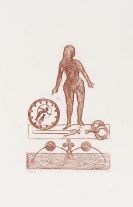
Théo Kerg
Nierkorn
1909 -
Chissey en Morvan
1993
Théo Kerg was born in Niederkorn, Luxembourg on June 2, 1909. In 1929 he left to become a pupil at the Ecole Supérieure des Beaux-Arts and to study at the Sorbonne in Paris. He became a pupil of Paul Klee in 1932 at the Kunstakademie in Düsseldorft after a brief stay in Munich. There he also met his long-time friend and a master student of Klee’s, August Preuße.
In December 1933, Kerg exhibited his abstract paintings in Luxembourg. In 1934, he became a member of the group Abstraction-Création in Paris. At the World Exhibition in Brussels in 1935, he received a gold medal for his abstract works. In the years that followed, Kerg devoted himself primarily to the creation of advertising posters, and in 1938 he won a national competition in this area. On the occasion of the World’s Fair in New York in 1939, Kerg created a large fresco, commissioned by the government of Luxembourg, with Thill and Jungblut.
When the German troops invaded Luxembourg on May 10, 1940, Théo Kerg left and spent four months in southern France. After his return, he worked as a visiting lecturer in art education at the School for Industry and Trade in Esch-Alzette, Luxembourg. In 1941, the artist was appointed Professor of Art Education at the School of Industry and Trade in the city of Luxembourg. At the end of World War II, Kerg was sent to jail “as a precaution,” without a trial, because of supposed transgressions against the Luxembourgian state. After his release in 1946, he emigrated to Paris. After illustrating the book Dignes de Vivre by Paul Eluard in 1947 with 20 woodcuts, he went to Switzerland for several weeks. After his return to Paris, he showed new lithographs in different exhibits with themes from the cities Basel, Bern and Fribourg, and from the Cathedral of Notre Dame in Paris. In 1948 Kerg began once again to devote himself to oil painting. In the 1950’s, Théo Kerg achieved international recognition with his works. In 1957, Kerg finally obeyed the call to the Arts and Crafts School in Kassel and worked there as a visiting professor, with interruptions, until 1965. During this time, he began to work more intensely with glass design and concrete sculpture, and he developed his own artistic movement, which he called “tactilism.” In 1989, Kerg fell so ill that he was barely able to paint anymore. When the "Museum Théo Kerg" was opened in Schriesheim bei Heidelberg in April 1989, the artist once again received much attention. Kerg died on March 4, 1993, in Chissey en Morvan, near Autun (Bourgogne).
Would you like to sell a work by Théo Kerg?
Infos for seller
